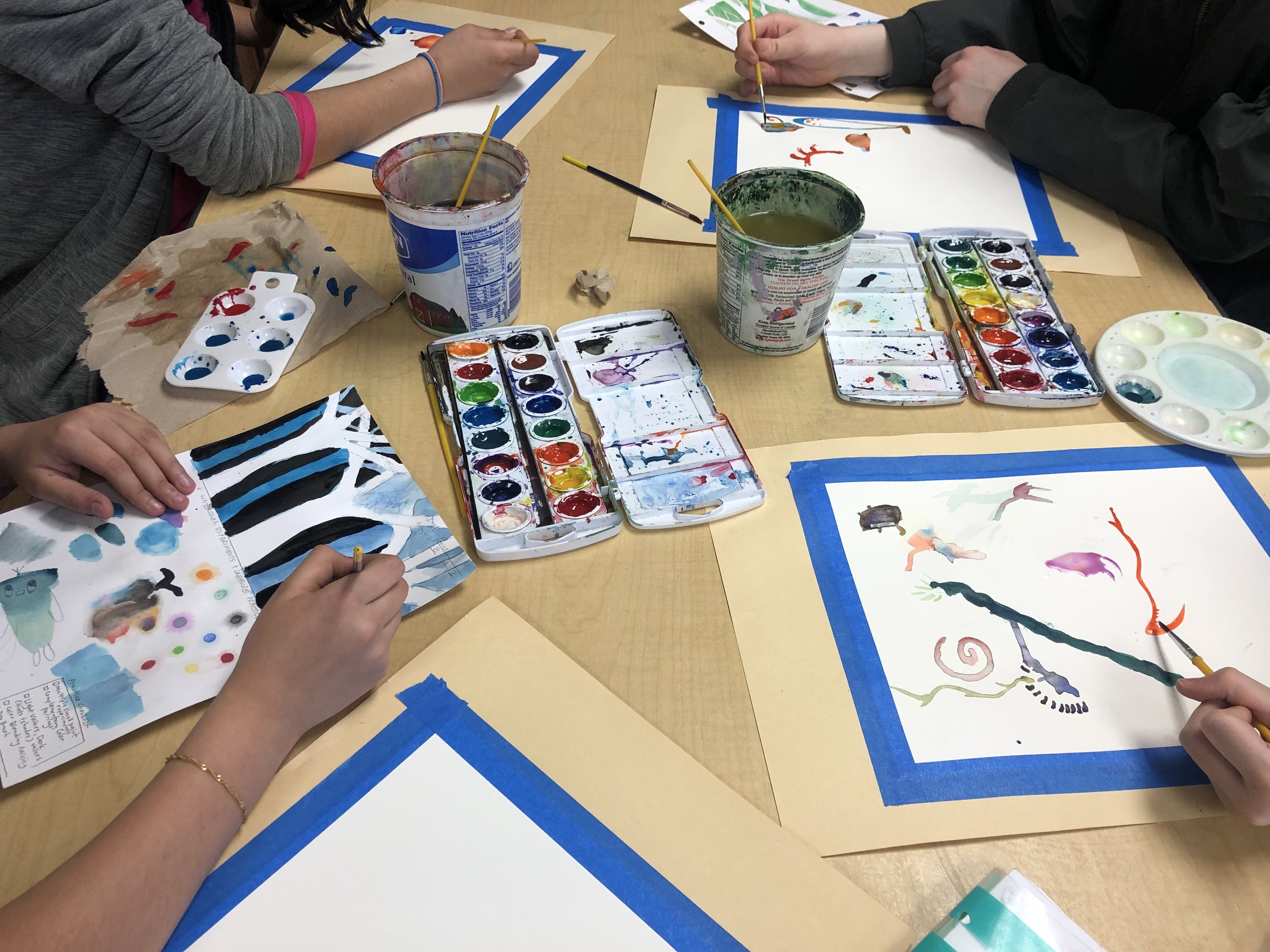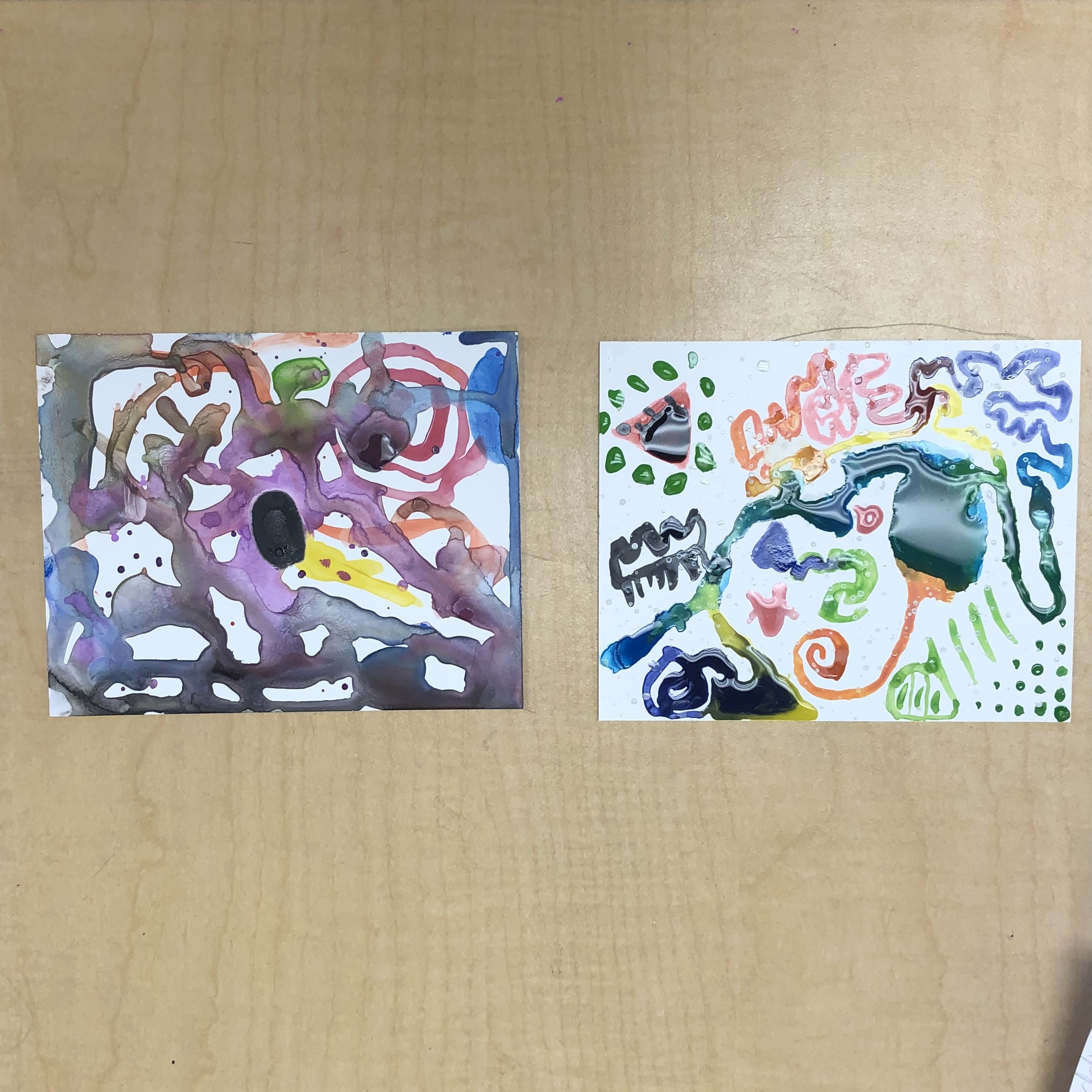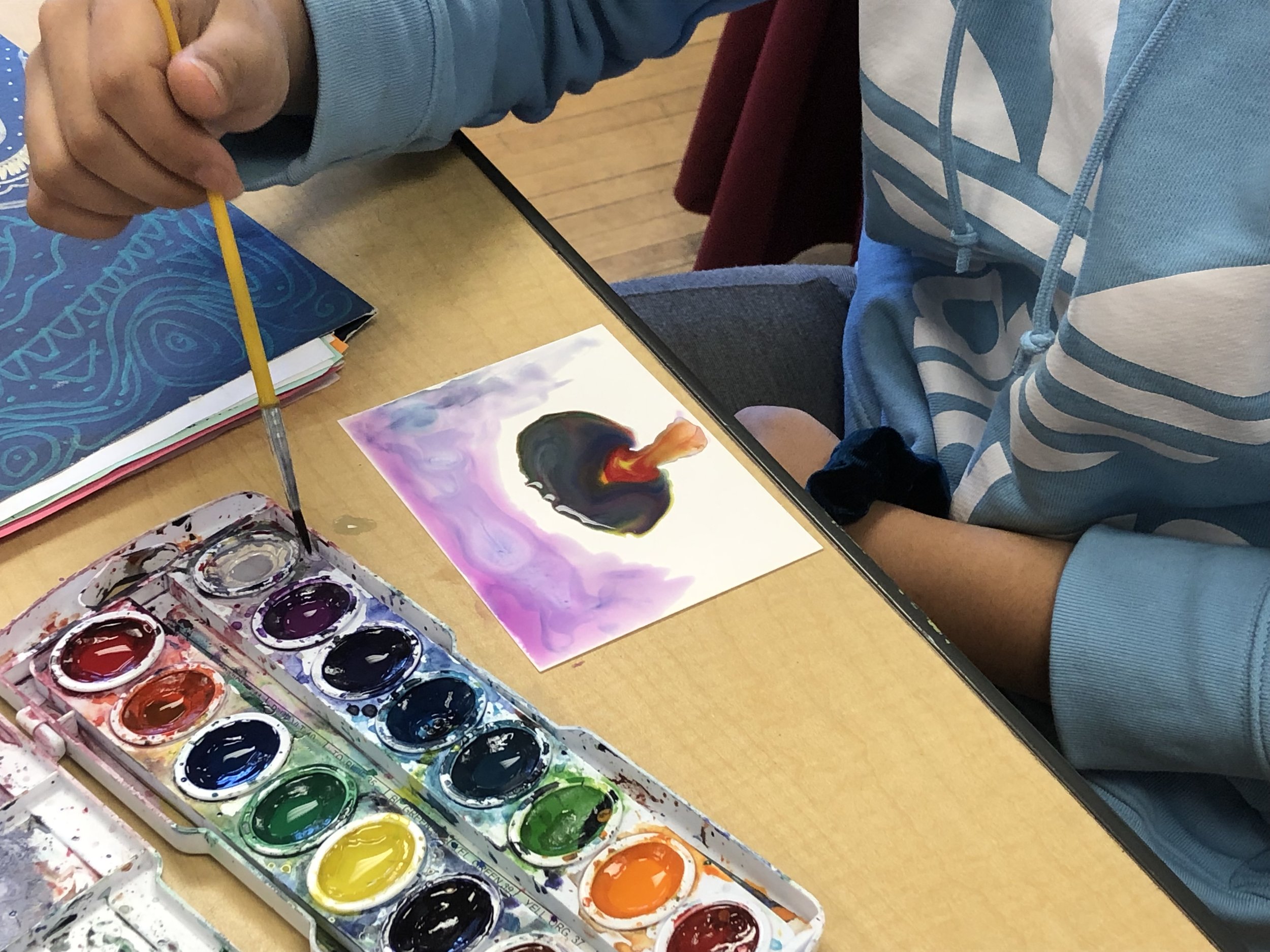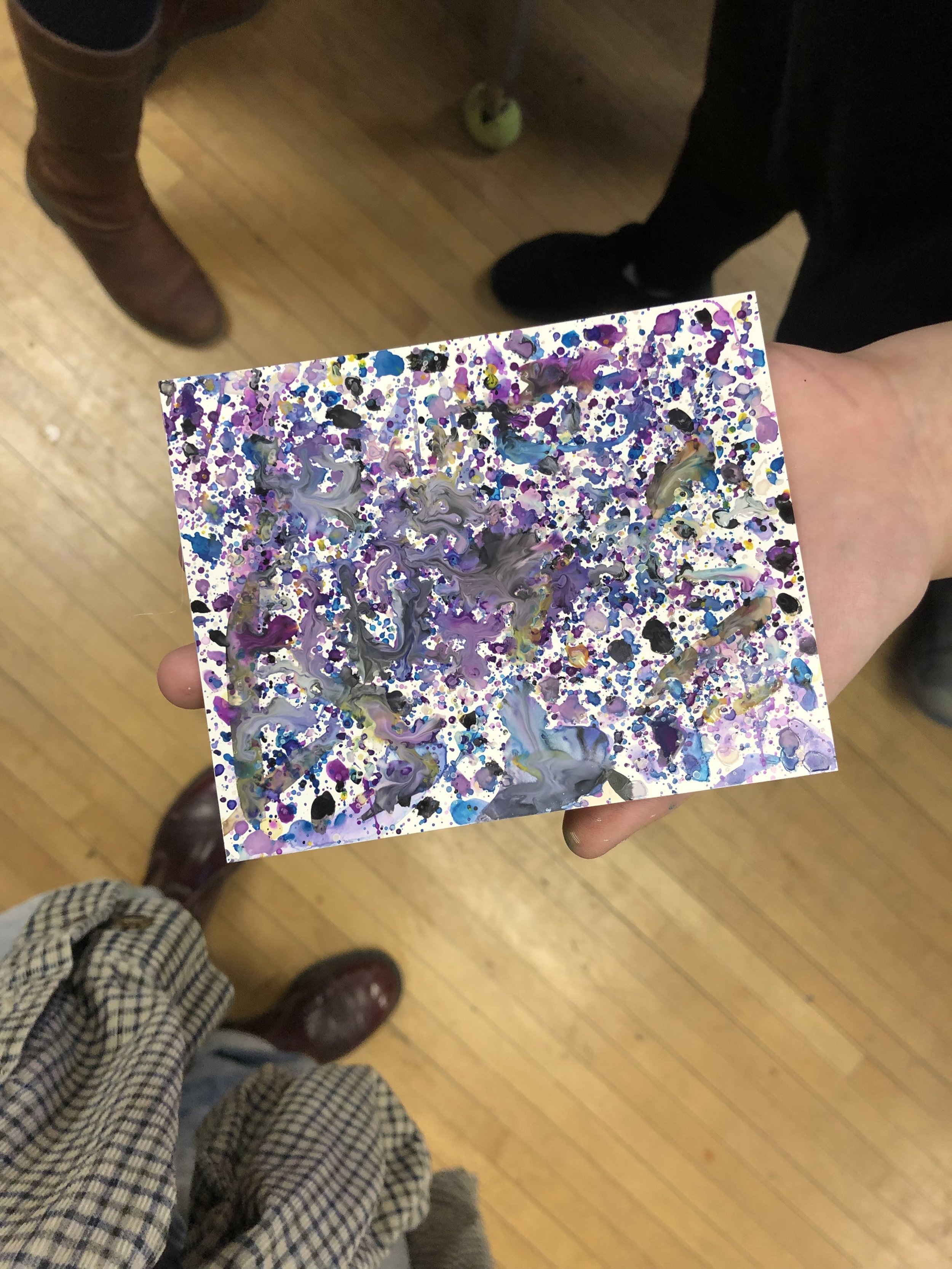Experimenting with Yupo Paper
School/Teacher/Classroom or Arts Organization/Mentor: Elissa Cedarleaf-Dahl at Justice Page School
Grade Level or Age of Participants: 6-7th grade
MCAD Teaching Artist: Lin Ajdukiewicz
Number of Students: 35-40
Visual Arts Content or Standards
6.1.2.5.1- Demonstrate the characteristics of the tools, materials and techniques of various two-and-three dimensional media for intentional effects in original artworks.
Overview of Project
Students will use Yupo paper to experiment with abstract watercolor techniques. They will observe the differences between synthetic and non-synthetic paper and use those observations to loosen up their techniques on non-synthetic paper. Without much prior knowledge on how to use watercolor, students may feel timid to let go with the medium and using a paper that allows no control over the medium will loosen the students techniques while they work on abstract pieces. Can you share why this is important?
“Big Ideas”/ Essential QUESTION(s)
How can we engage with unexpected results in a positive way and see them as productive and positive?
Student Outcome Objectives
Students will:
Experiment with synthetic paper to create abstract watercolor figures.
Use the experimental and unpredictable techniques that they learned from the synthetic paper to work more loosely and freely on a final watercolor paper design.
Prior Knowledge
Students must know basic watercolor techniques such as, wet on wet, dry on wet, wet on dry and dry brushing techniques.
Examples of Artwork:
Additional Resources
https://paintingdemos.com/painting-with-watercolors-on-yupo-paper-a-few-techniques/
Assessment
The assessment for this project could be a formative assessment where students raise their hand and tell the class one thing that they have learned after using the new type of paper or a portfolio assessment. For the portfolio assessment, students lay out all of their work from the day on their desk and students can speak at their tables about what they made.
It is important for students to see each other’s work since the medium is unpredictable. Seeing others allows the students to figure out what else they can also do with their paper. With the setup of the classroom being in tables, it allows for students to have close access to each other's work.
Materials
Yupo Paper (4, 20”x29’’ sheets cut into 5” by 4” rectangles)
Watercolors
Watercolor Brushes; Flat, sharp, round
Water cups
Paper to blot brushes
Learning Activities and Timing
I will begin in the front of the class by explaining what Yupo paper is and its qualities. It is key that students understand the difference between synthetic paper and non-synthetic paper. Yupo can be used over and over again, specifically with watercolor, the pigment can be washed off and it will only minorly stain the paper.
The demo video will start and I walk around with my example that I had made in the demo video. Students can feel the paper and see the watercolor techniques that I used.
The video will loop throughout the whole class, with no sound, so that if students need inspiration for techniques they can look up and view the demo video.
Students will retrieve materials and begin to experiment. SInce this lesson is tagged along to another lesson about abstract watercolor creatures, students will attempt to make these creatures on the Yupo paper.
When done with experiments, students will be instructed to move to their watercolor paper final where they will use the skills that they learned from the Yupo paper.






